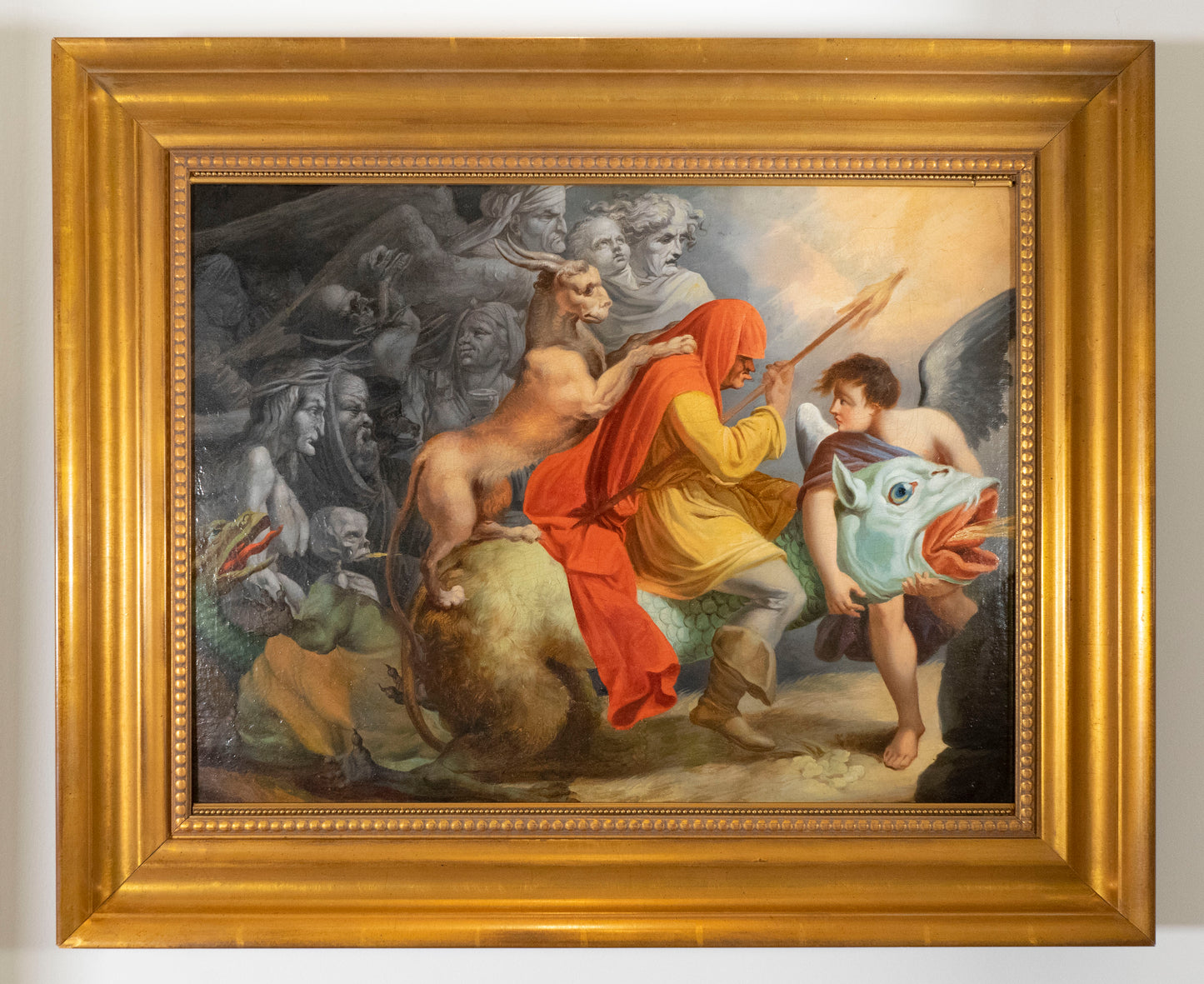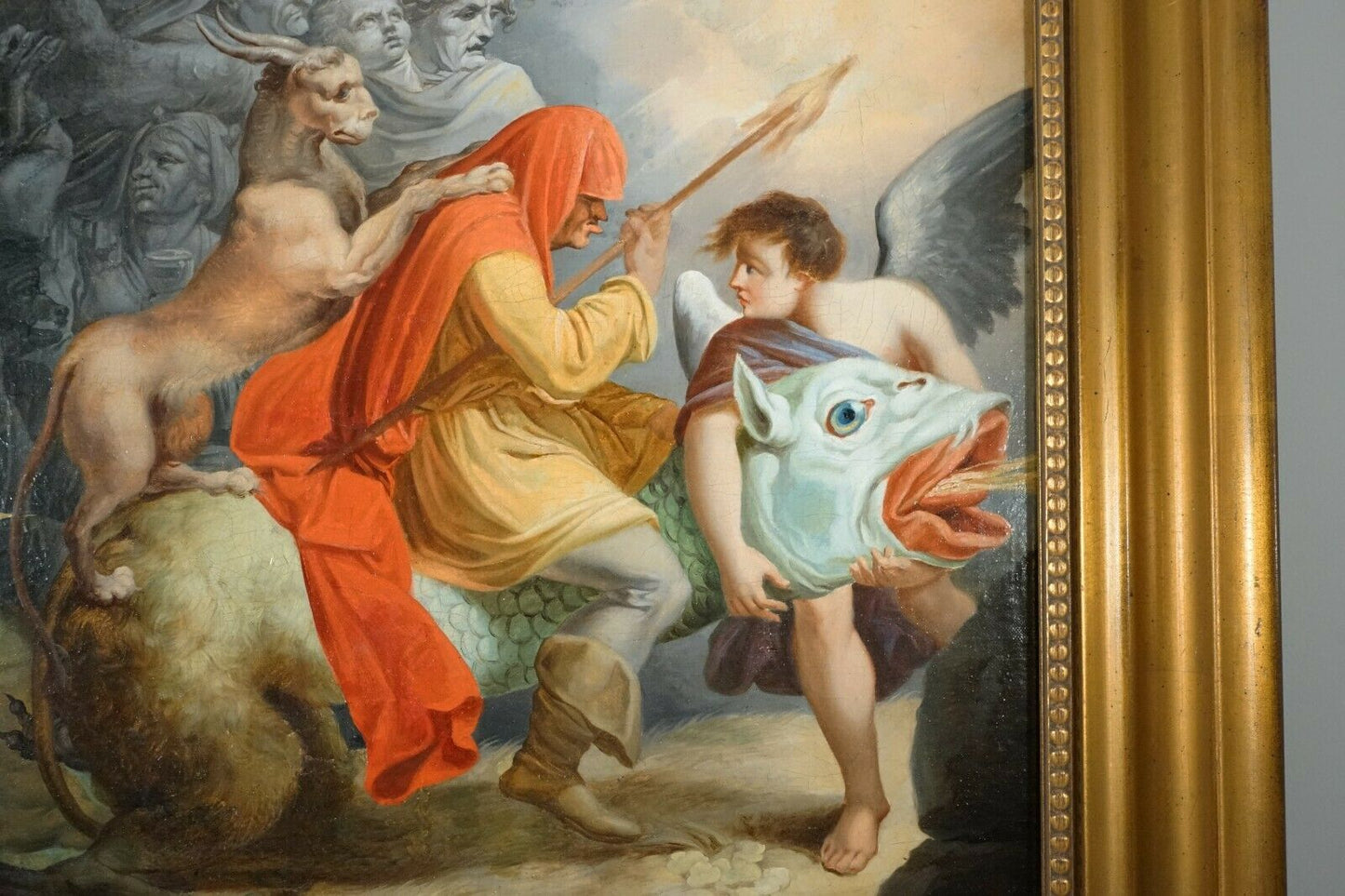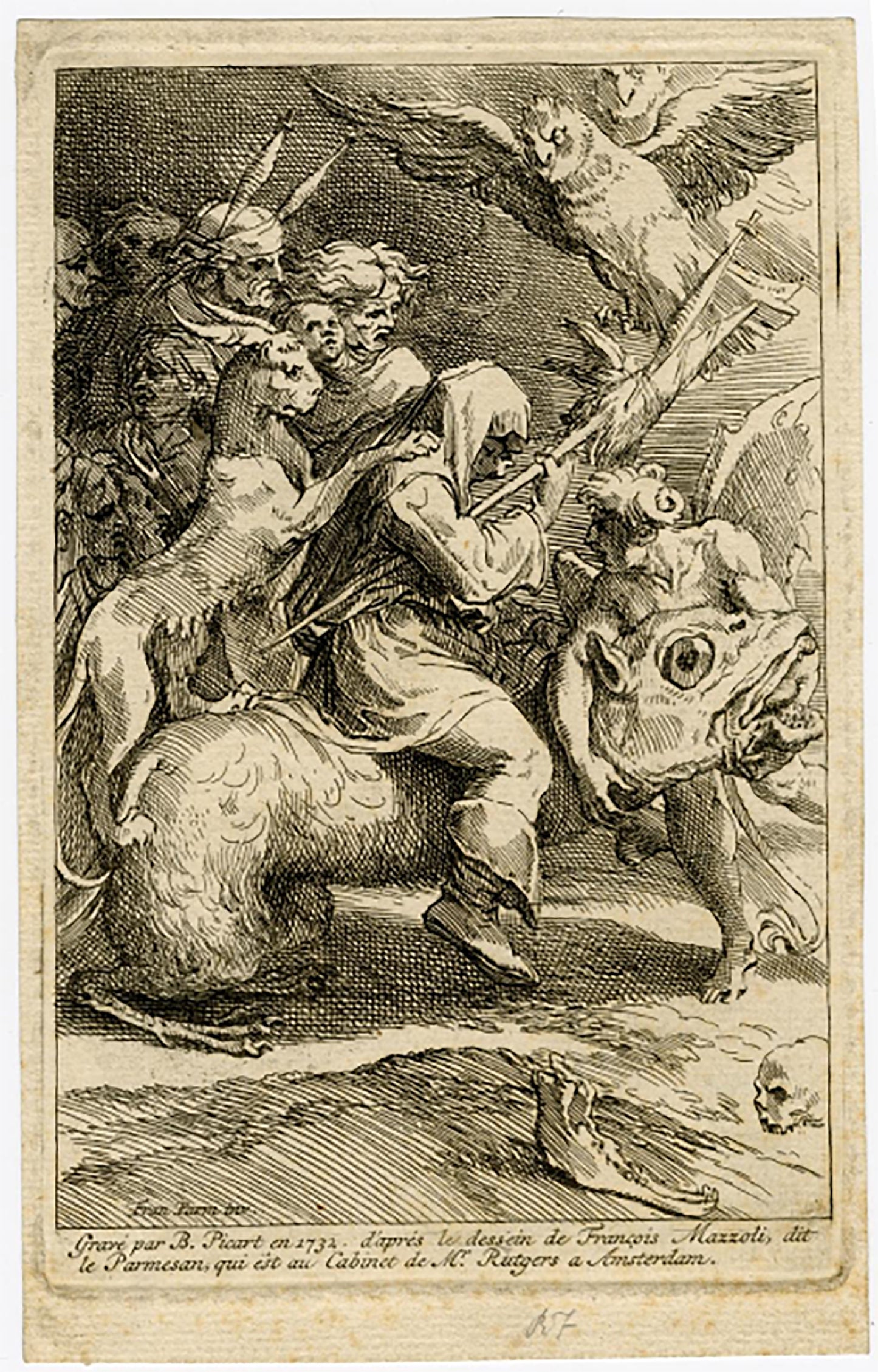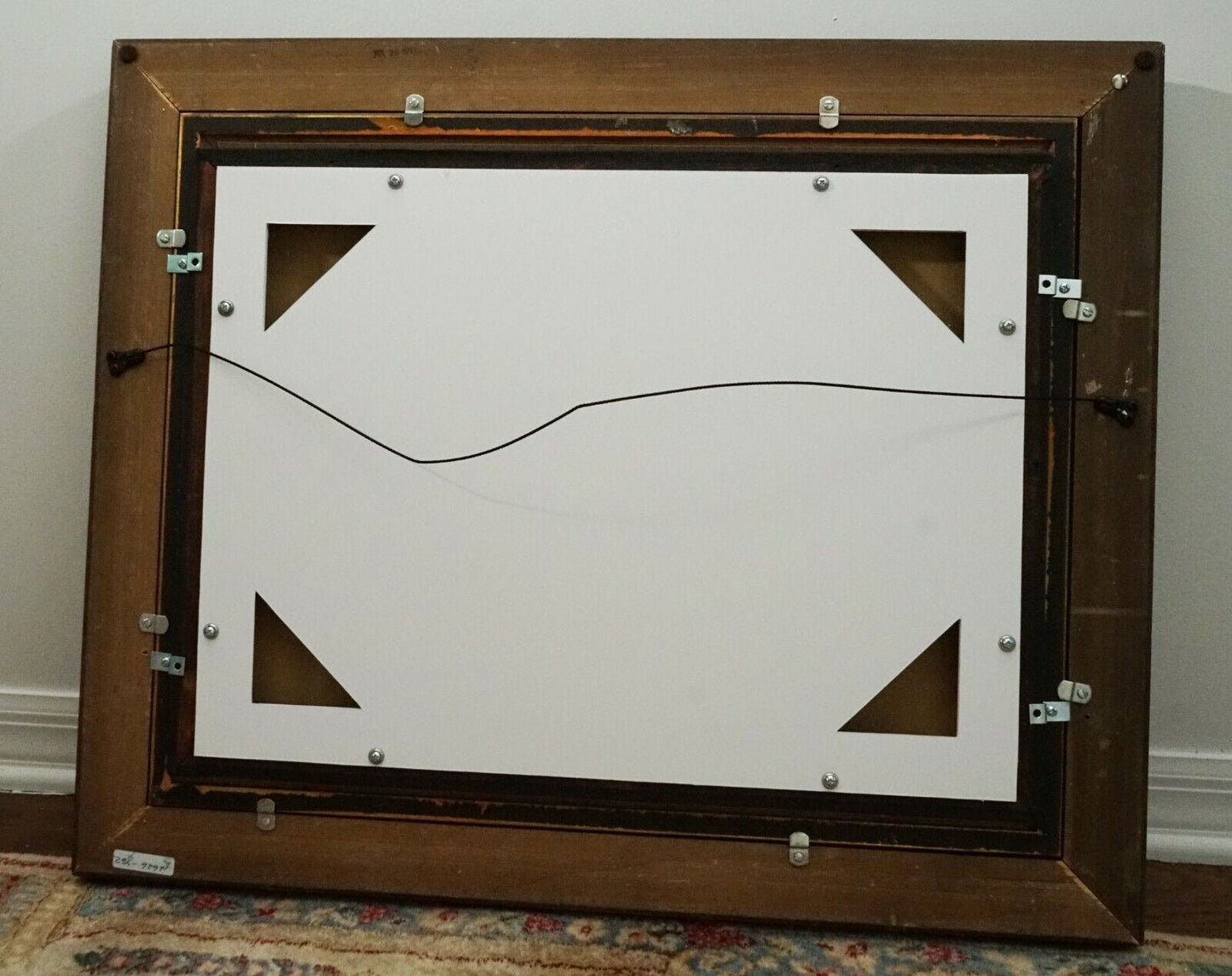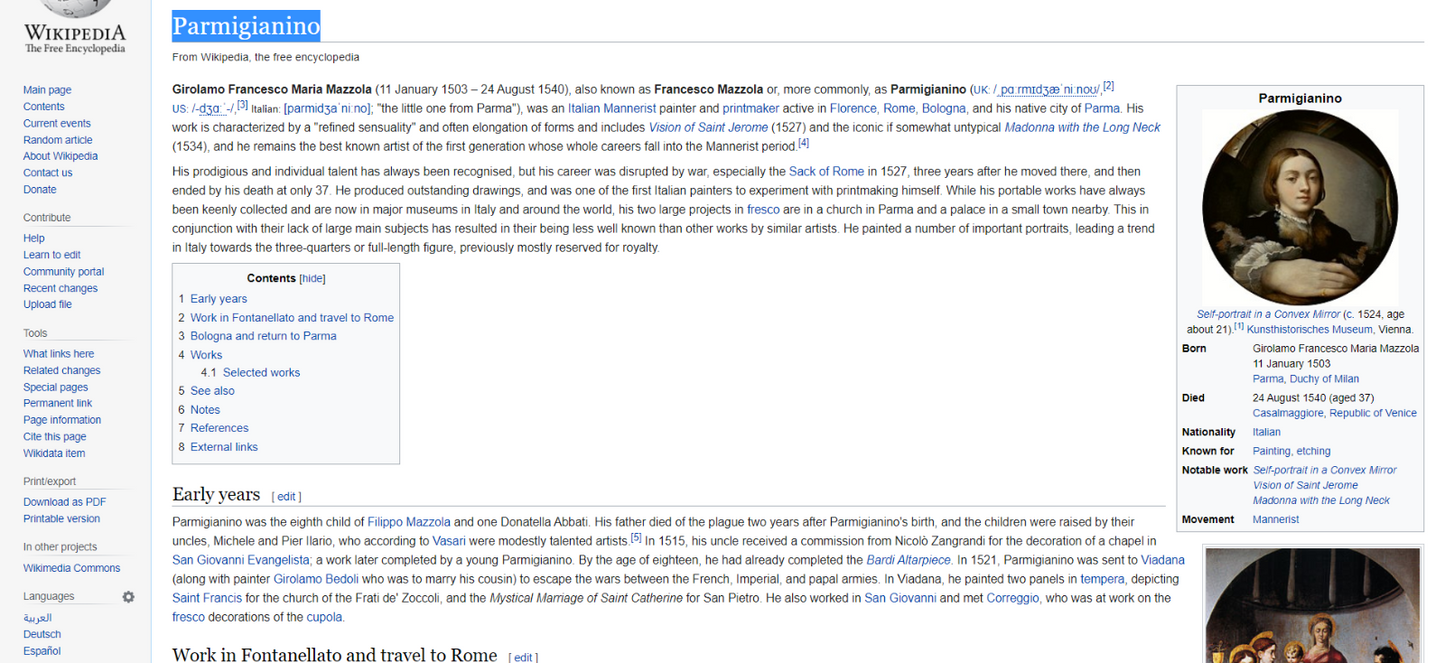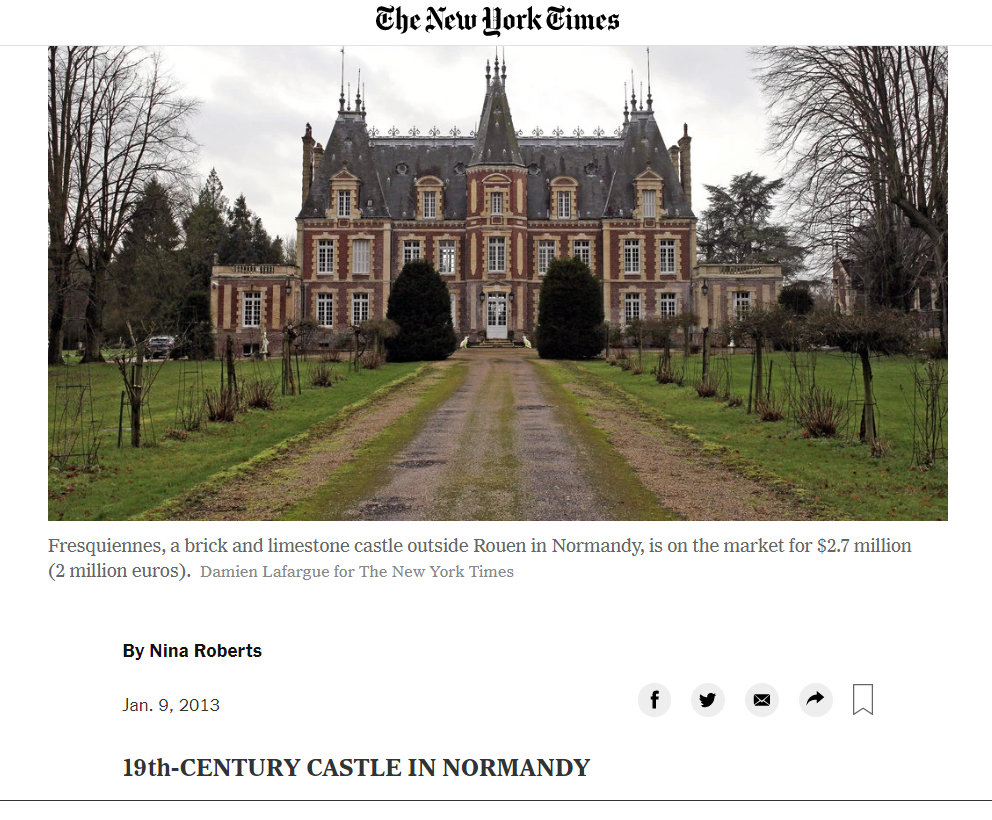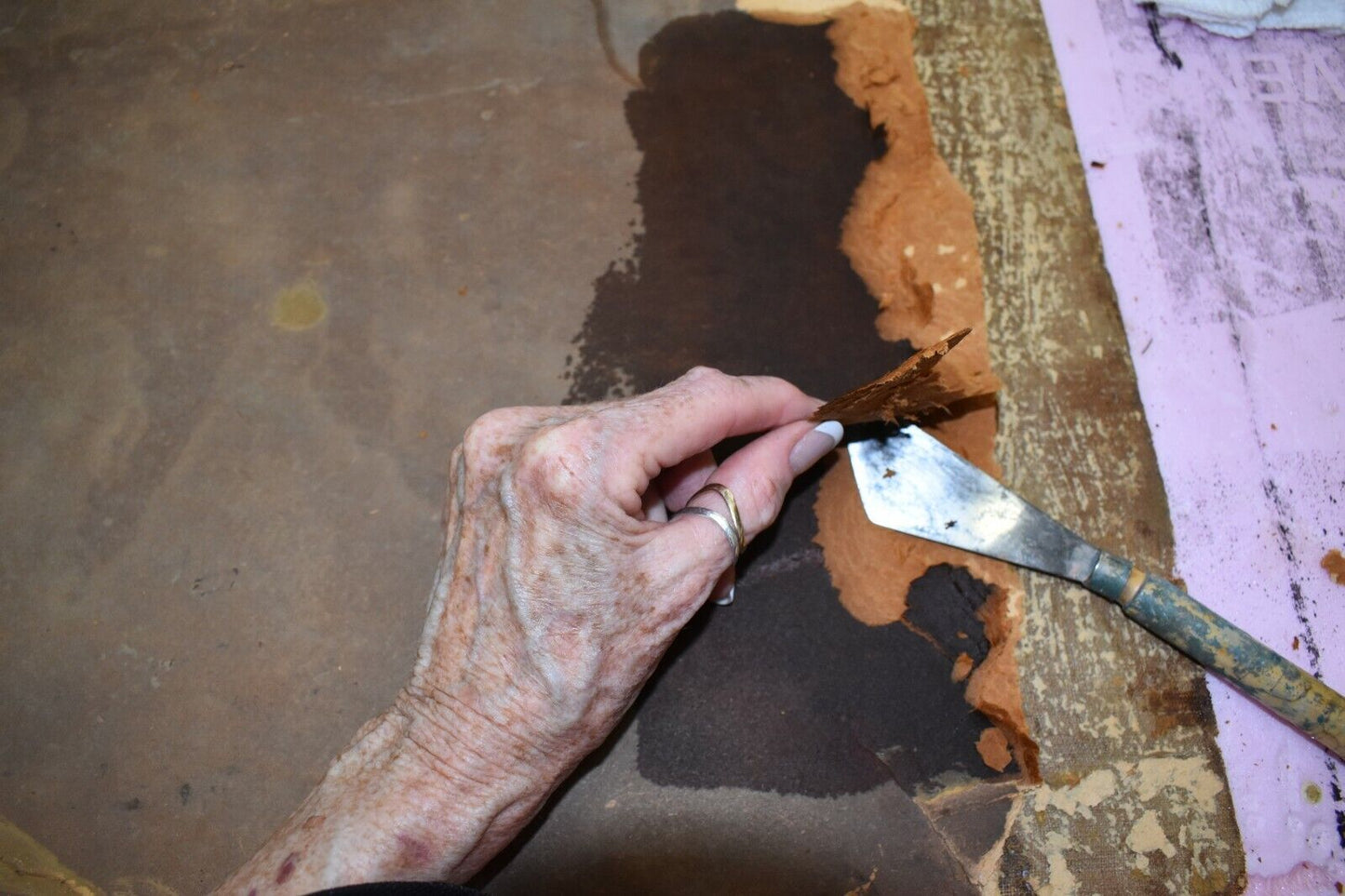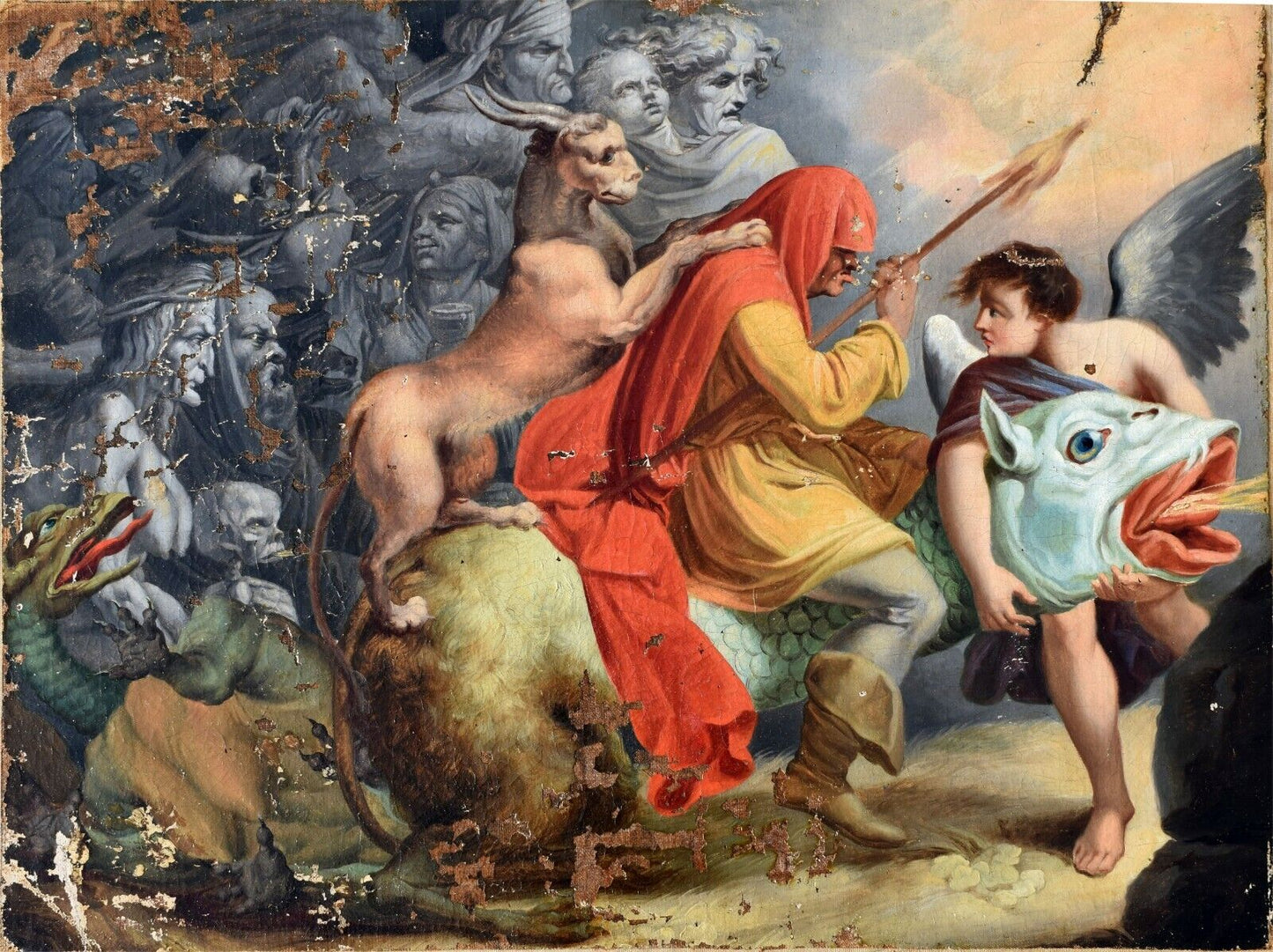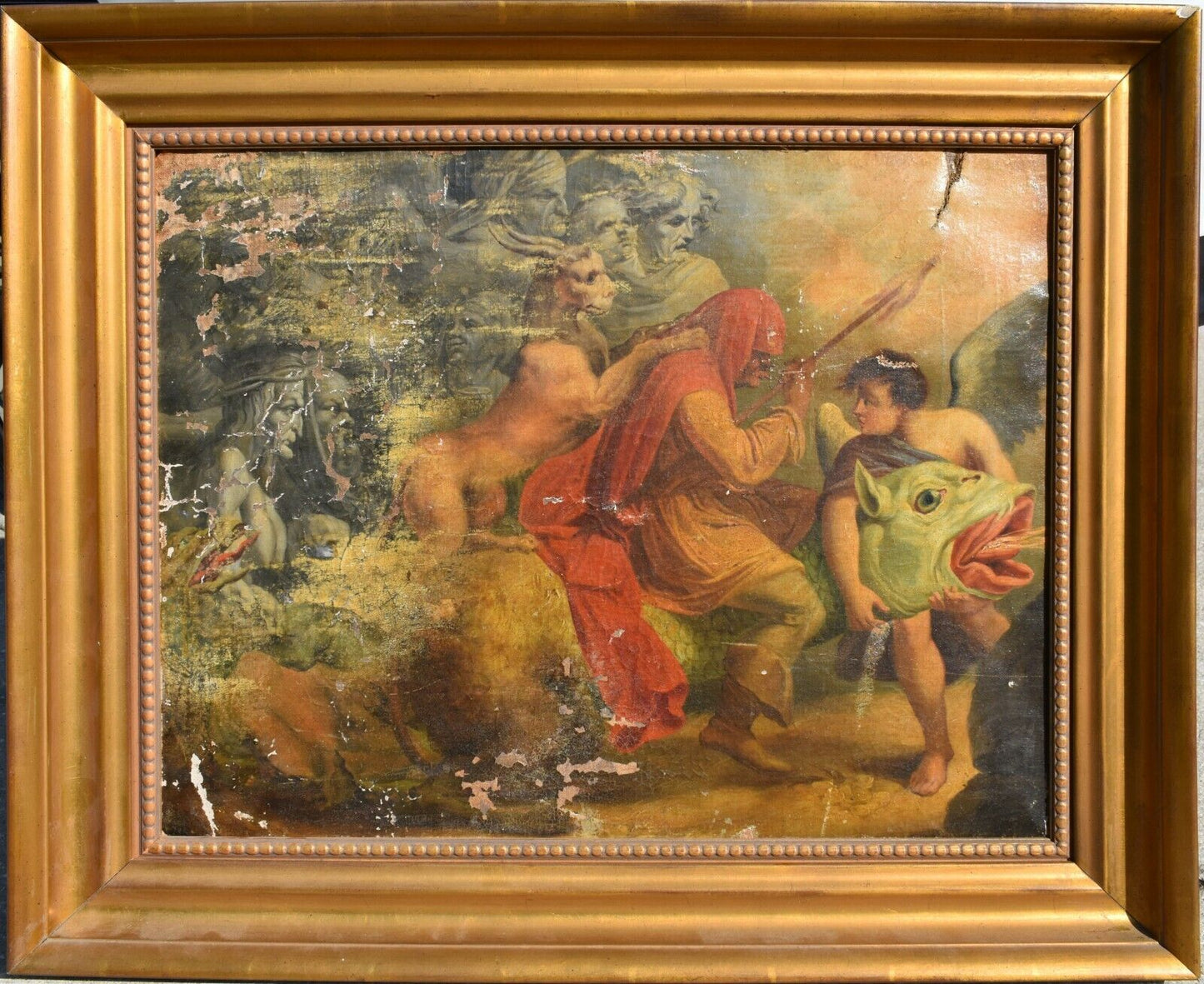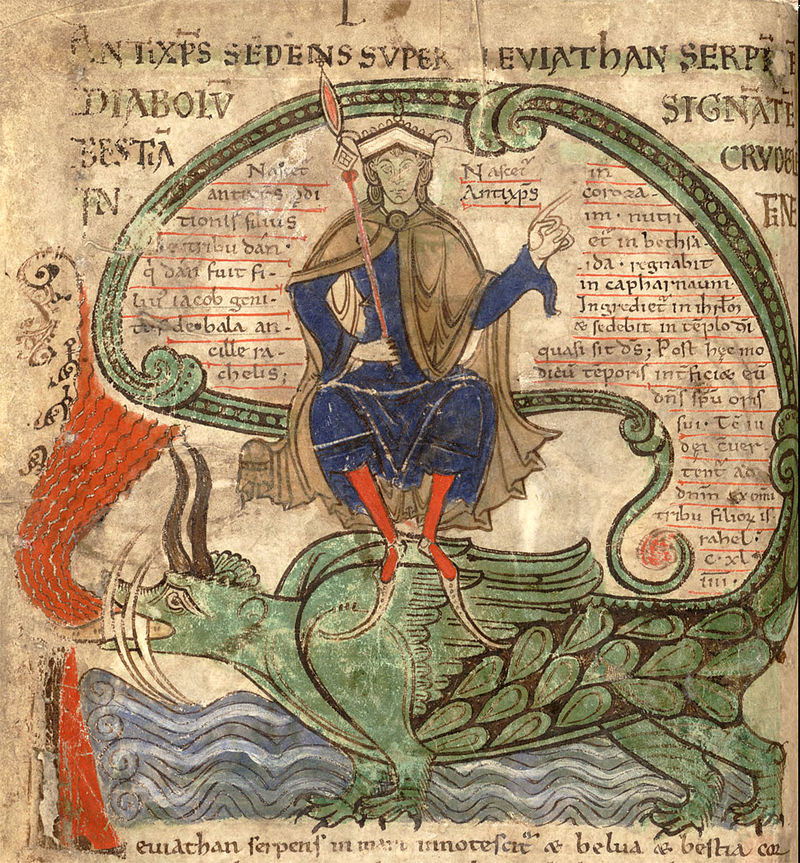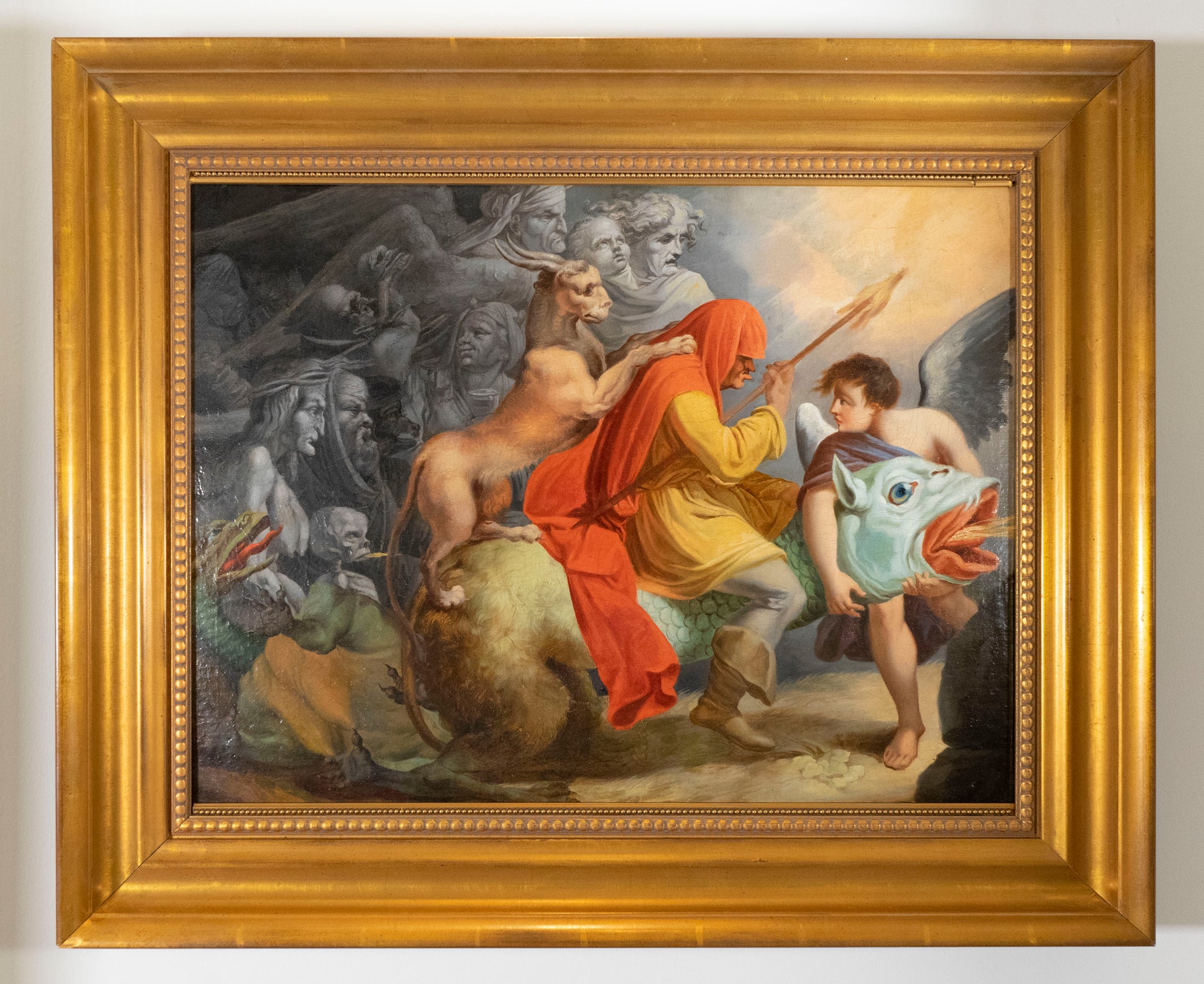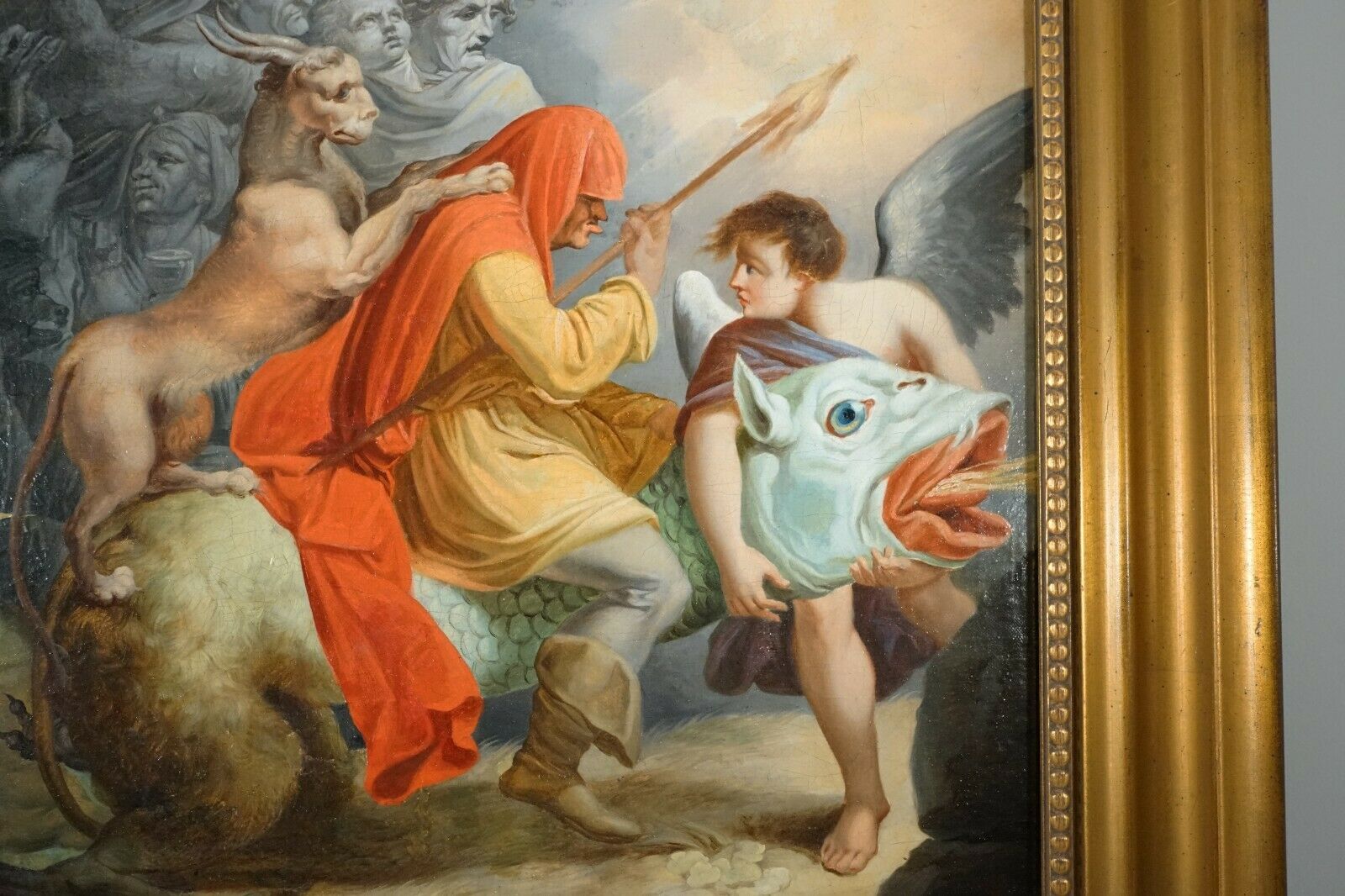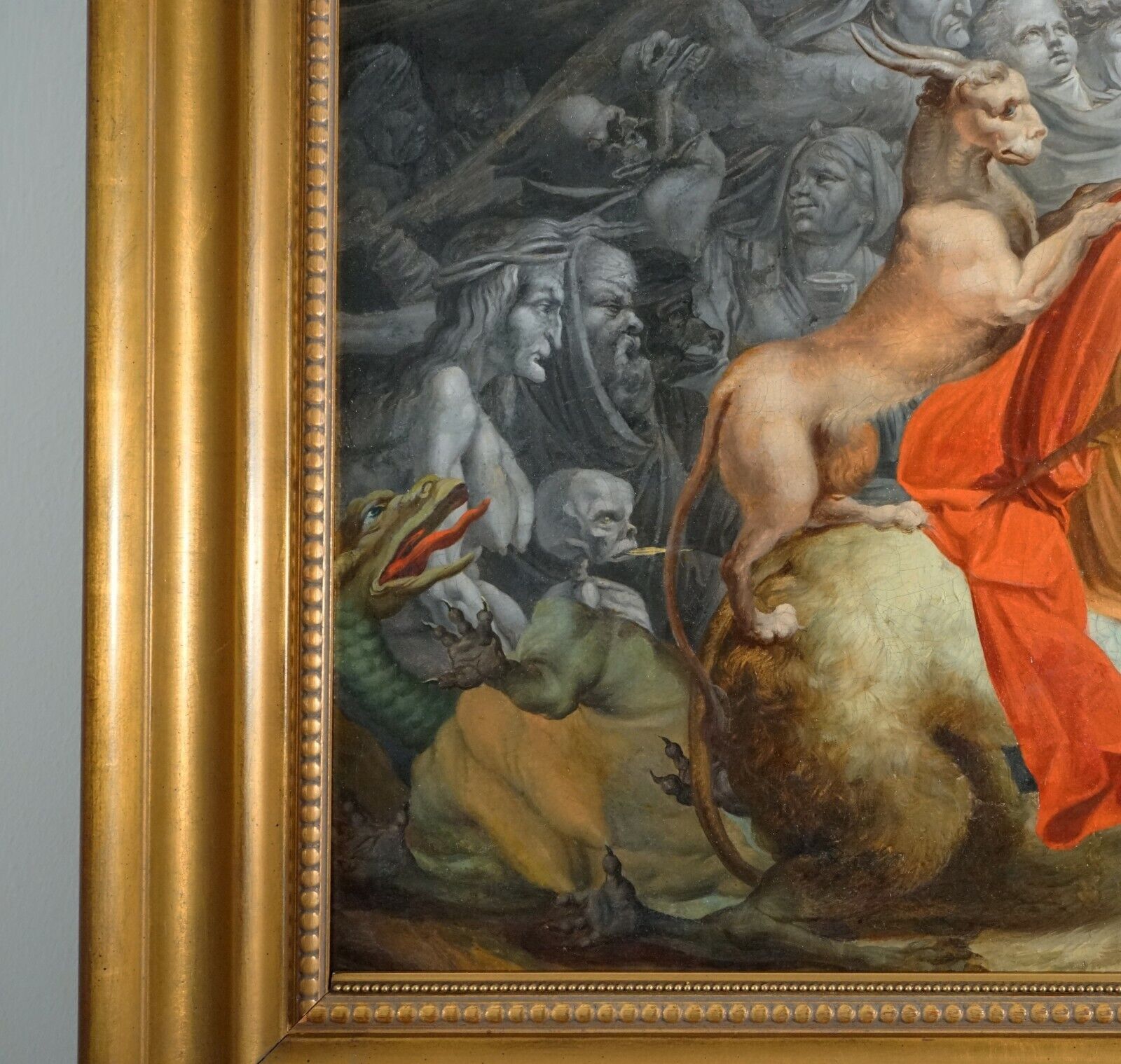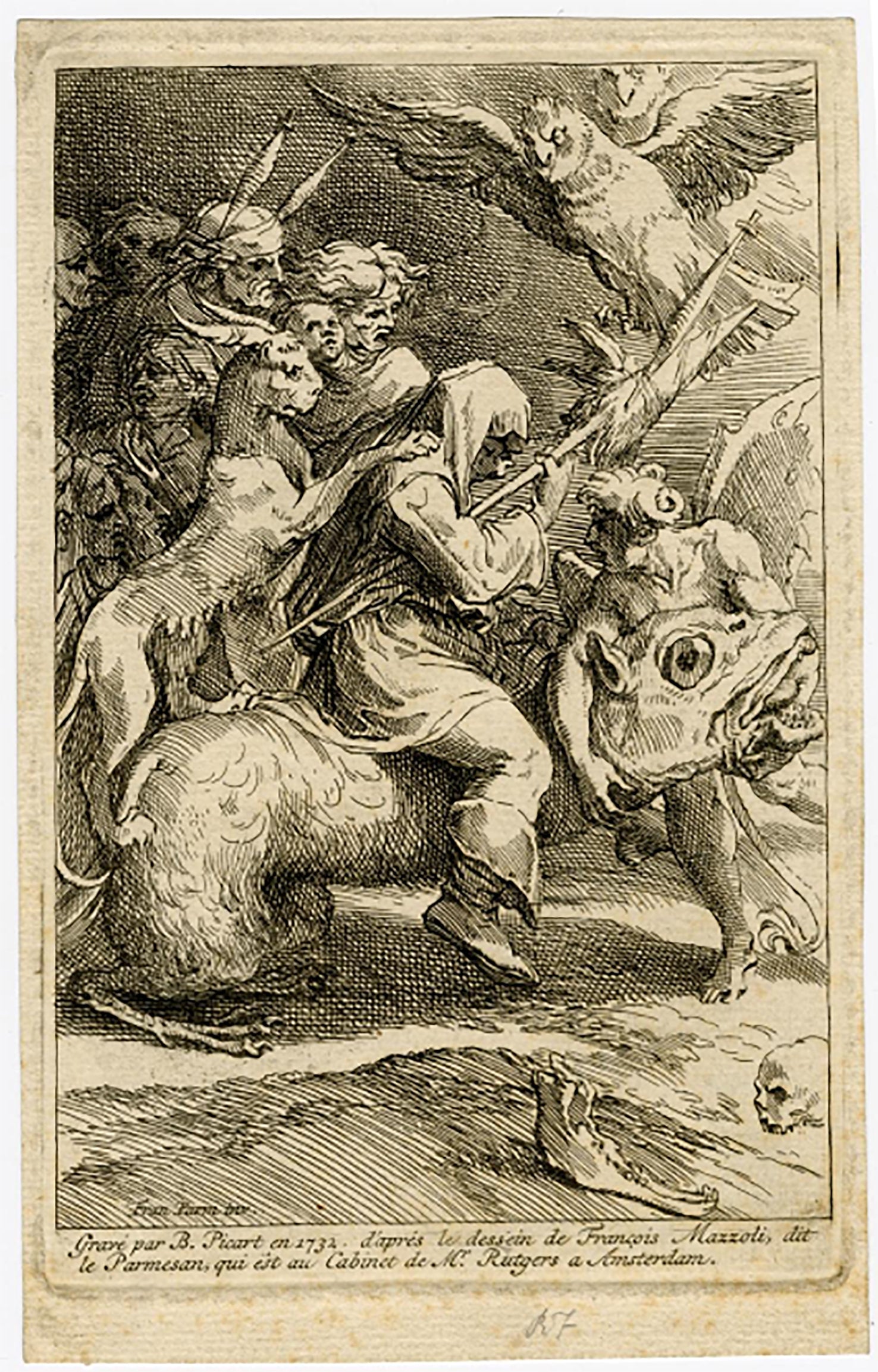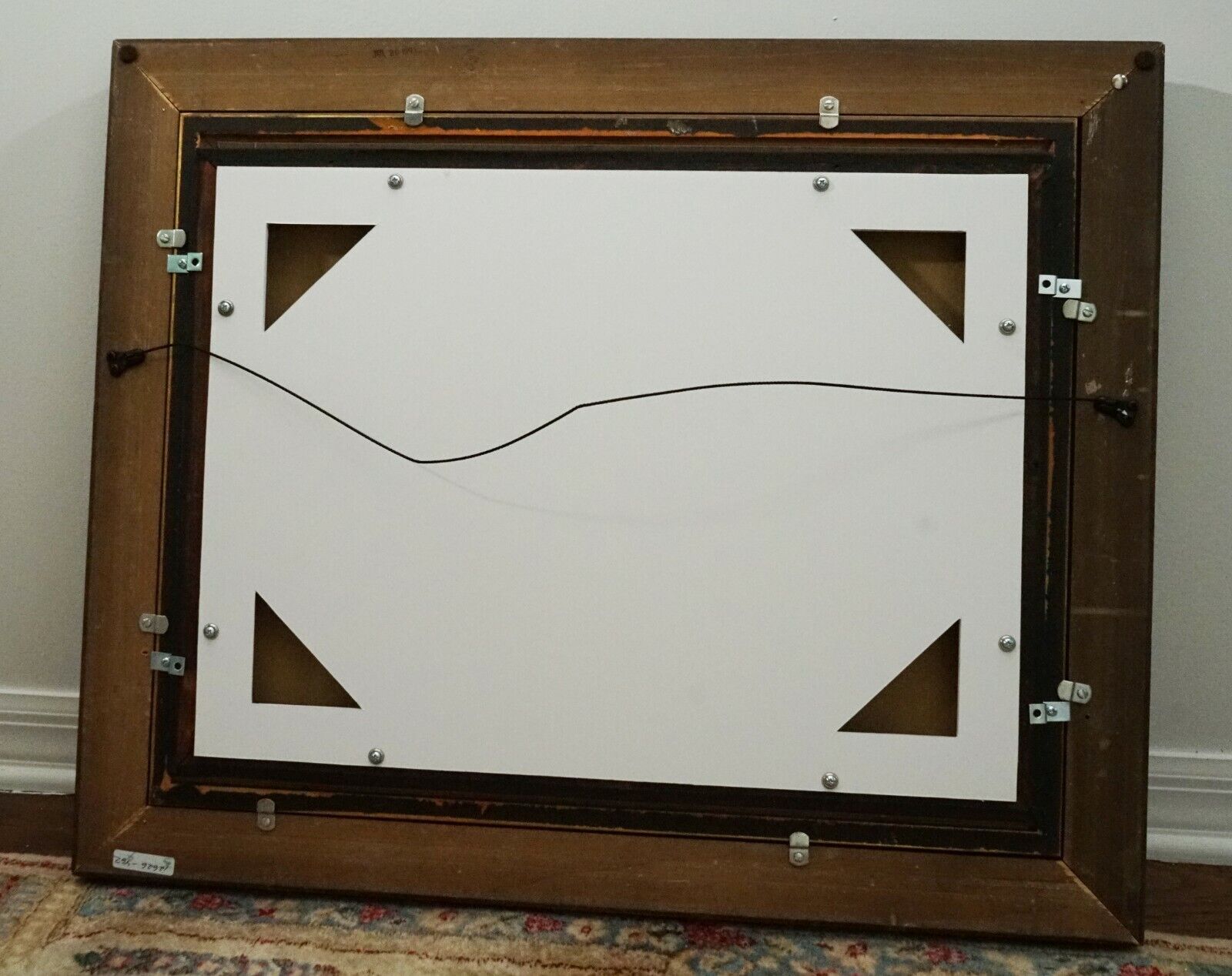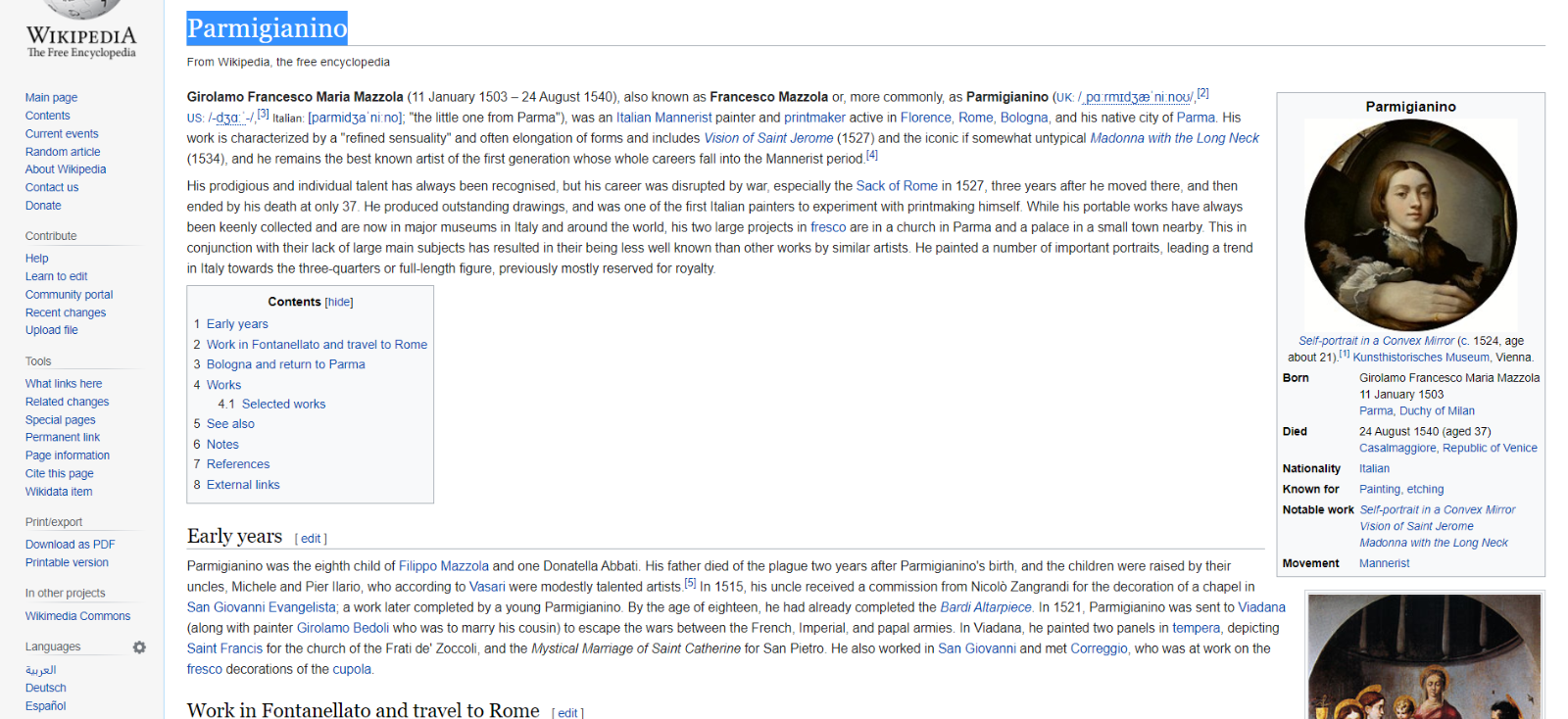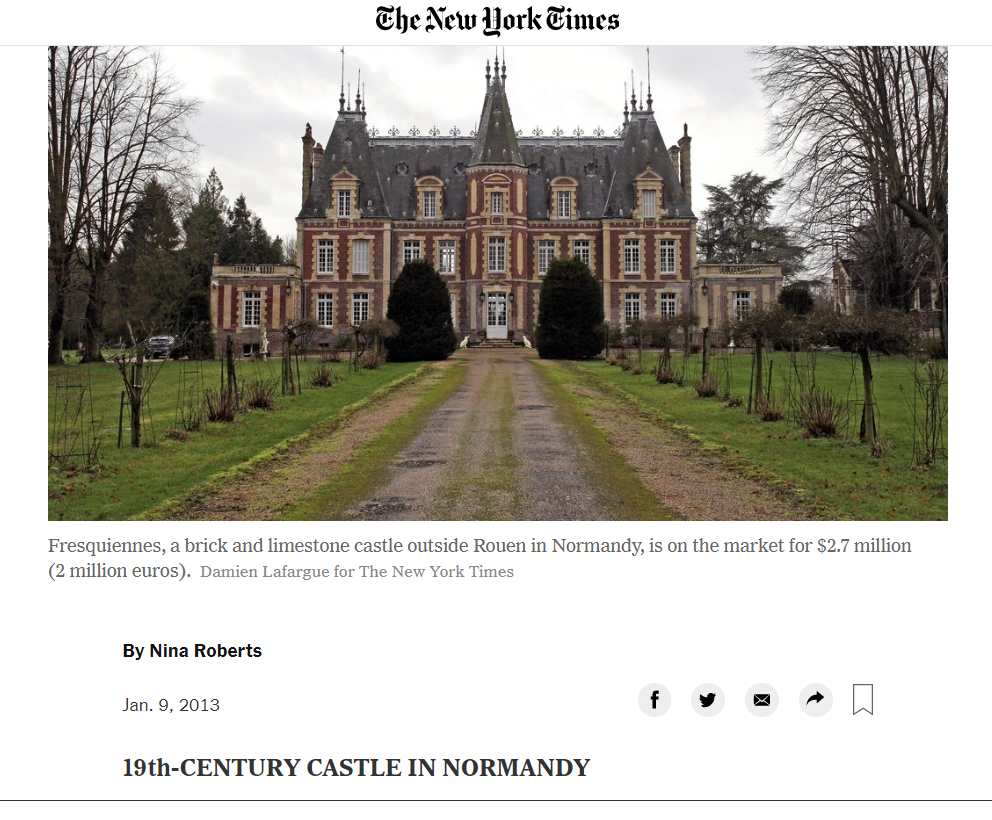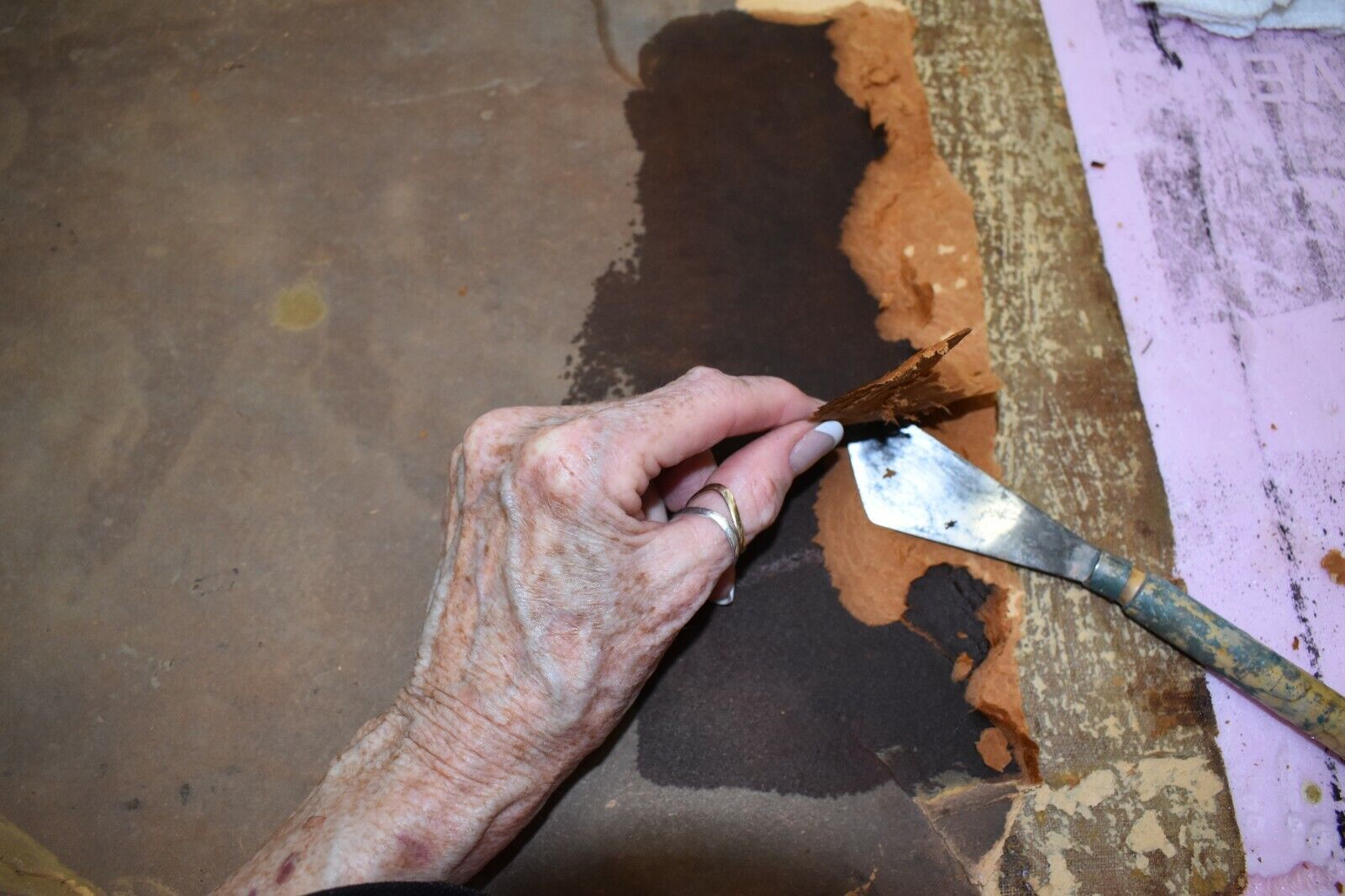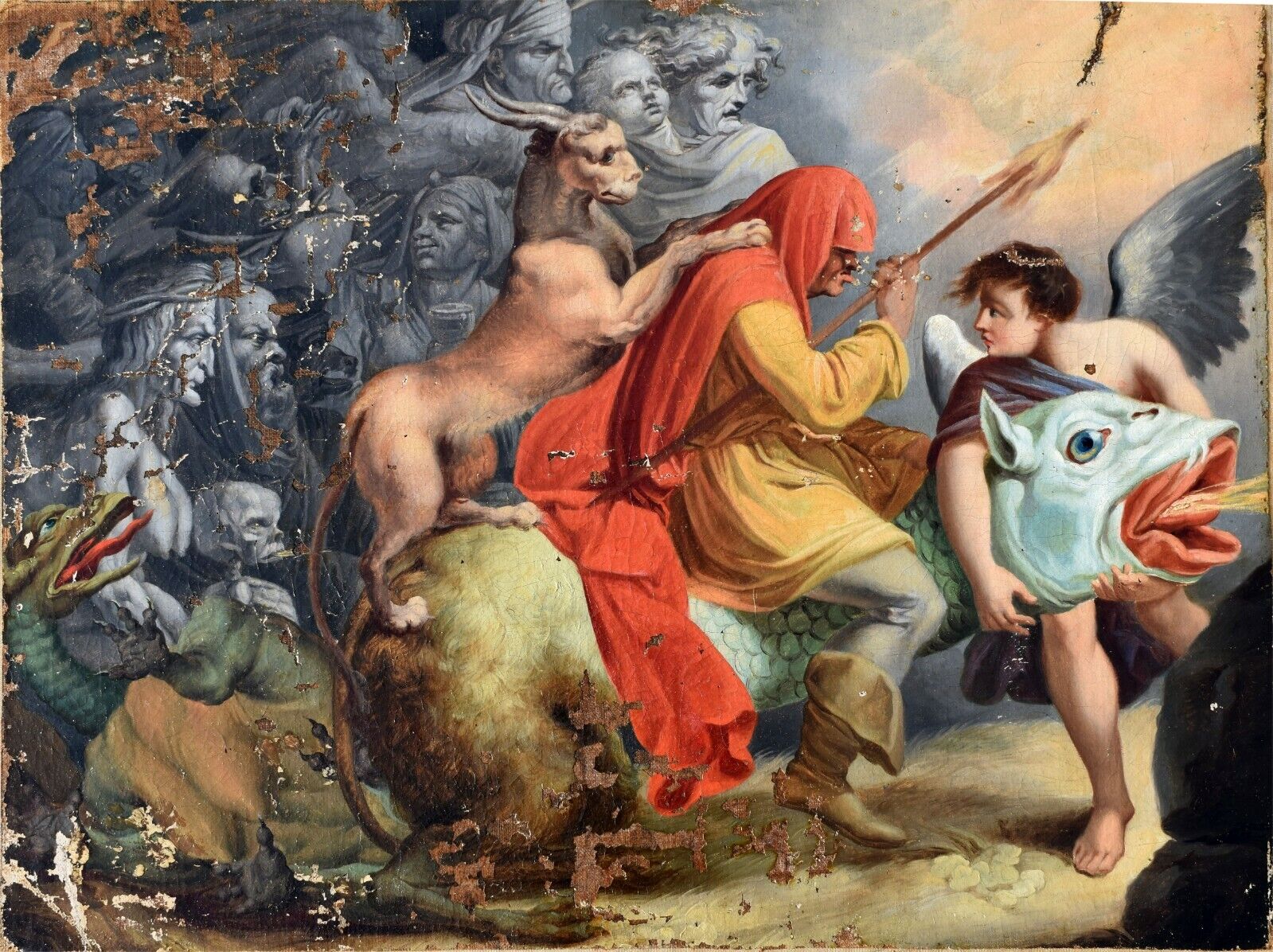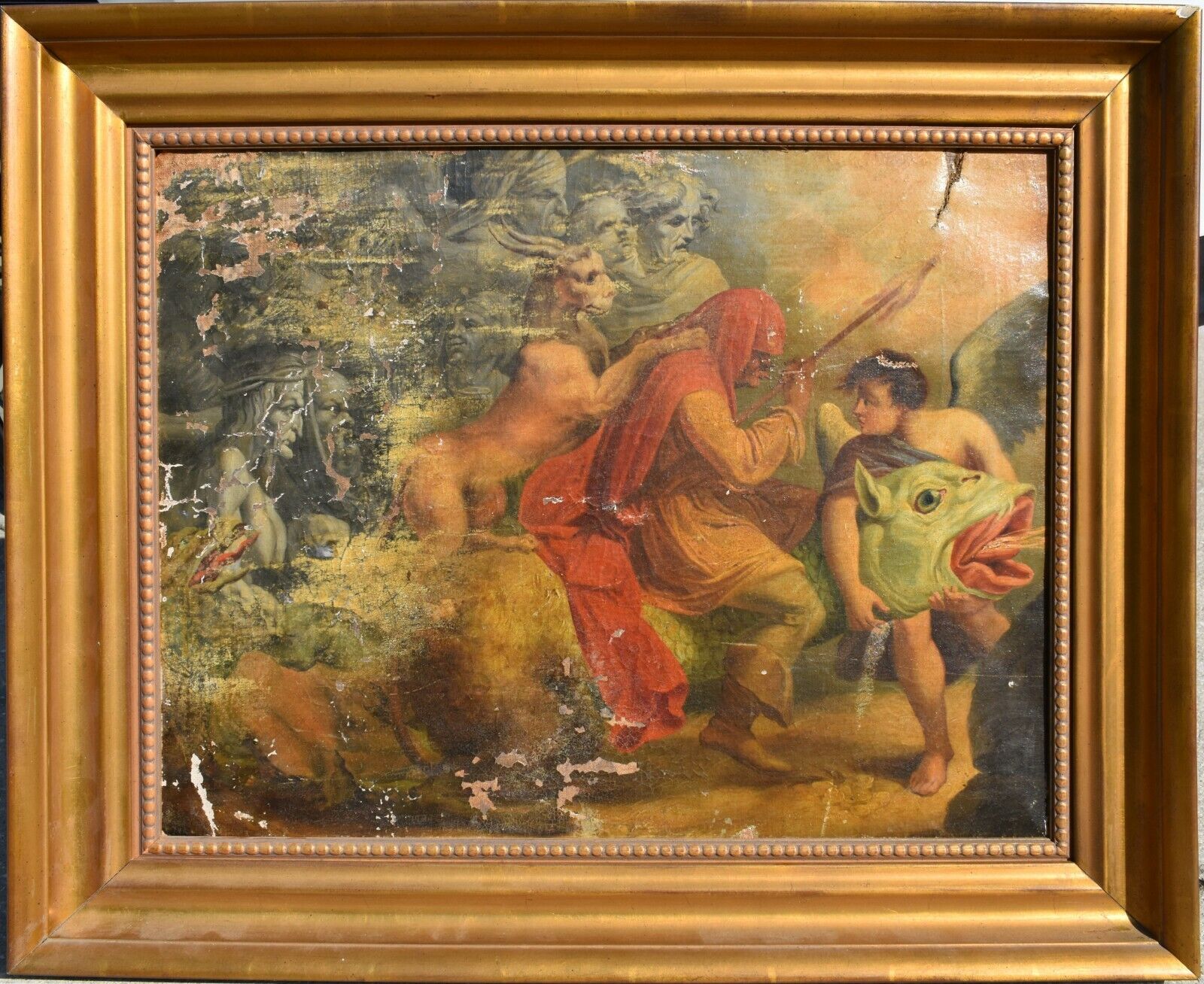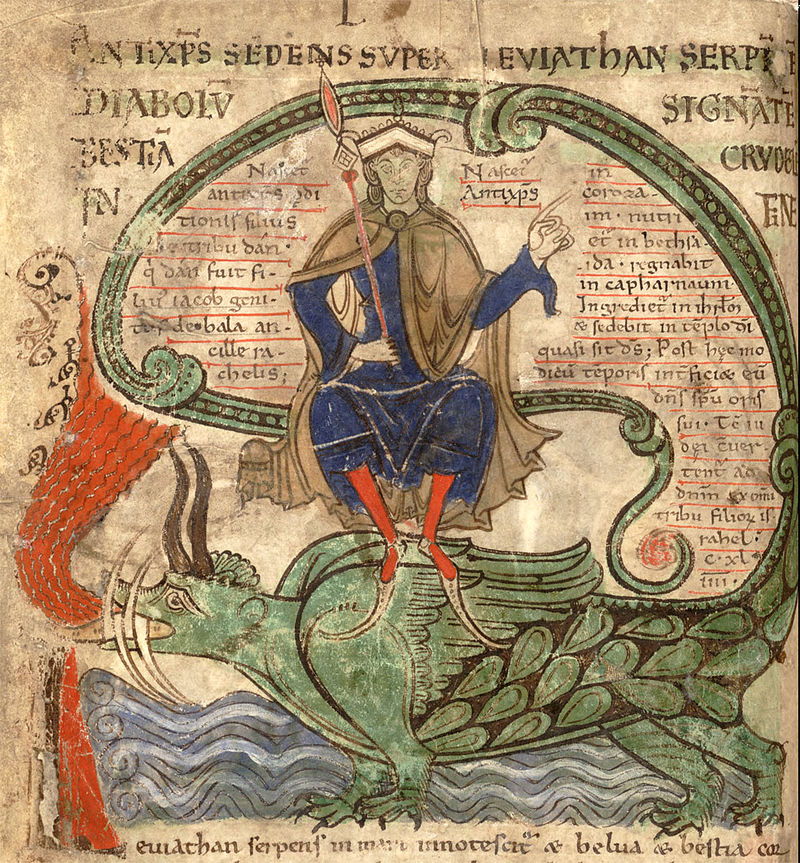wondrous-things-antiques
Witches Sabbath Painting After Parmigianino 1503 - 1540 18th century Oil Canvas Restored
Witches Sabbath Painting After Parmigianino 1503 - 1540 18th century Oil Canvas Restored
Couldn't load pickup availability
Witches Sabbath Parmigianino 1503 - 1540 18th century Oil Canvas Restored
NOT FOR SALE UNDER RESEARCH, TESTING AND ANALYSIS
After Girolamo Francesco Maria Mazzola (11 January 1503 – 24 August 1540), also known as Francesco Mazzola or, more commonly, as Parmigianino of the Italian High Renaissance.
Interpretation of work..
It's a historical fact that Parmigianino was devastated by the Sacking of Rome in 1527, after which Parmigianino was reported to go into a mystical period. A vast majority of Parmigianino works were of religious subjects. Our interpretation is that after the Sacking of Rome Parmigianino felt the World (or his World) was coming to and end i.e. Armageddon.
The painting is of the anti-Christ (possibly Charles V) riding the Leviathan at the end times. The cast of characters in the upper left are demonic figures, possibly the seven sins? awaiting the slaying of the chaos monster by God. The angel is subduing the beast with God's light appearing from upper right.
From Wikipedia -- Leviathan can also be used as an image of the devil, endangering both God's creatures—by attempting to eat them—and God's creation—by threatening it with upheaval in the waters of Chaos. A "Dragon" (Drakon), being the usual translation for the Leviathan in the Septuagint, appears in the Book of Revelation. In accordance with Isaiah 27:1, the dragon will be slain by God on the last day and cast into the abyss. The annihilation of the chaos-monster results in a new world of peace, without any trace of evil.
The final image of the anti-Christ riding Leviathan in from a early bible manuscript dated 1120 AD.
It should be noted that the sea monster symbolism is ancient.
Sea serpents feature prominently in the mythology of the ancient Near East. They are attested by the 3rd millennium BC in Sumerian iconography depicting the god Ninurta overcoming a seven-headed serpent. It was common for Near Eastern religions to include a cosmic battle between a sea monster representing the forces of chaos and a creator god or culture hero who imposes order by force. The Babylonian creation myth describes Marduk's defeat of the serpent goddess Tiamat, whose body was used to create the heavens and the earth.
Important Mannerism Work: Only known painting of 18th Century recreation of Parmigianino famous Witches Sabbath painting which was later the subject of Bernard Picart's 1732 engraving. (see image 4).
Please note the reproduction or unauthorized downloading of images of this painting is prohibited. We reserve ownership of the digital images) of this Witches Sabbath after Parmigianino work. Unauthorized use of images will be referred to our legal counsel.
Size: Sight of canvas; 22 inches (56 centimeters) wide, 16 1/2 inches 32 (centimeters) tall.
Framed: 28 1/2 inches (72.5 centimeters) wide, 23 1/2 inches tall (99.5 centimeters)
Condition: This painting was professionally restored (over 1 year project). It was found mounted on board (pic 8). This board was carefully removed and the painting was relined and mounted on wood frame. There was a slight reduction in the size of the painting due to non-restorable areas (loss paint) primarily on the top edge of painting.
Final image is remnant fragment of painting that has been removed. This fragment is available (for a fee) to be analyzed and tested by forensic art science expert. Obviously, an earlier dating of this work could prove it to be a very, very important renaissance masterwork.
If It was determined that the painting was 16th century further lengthy scholarship and scientific study could lead it to be the original work of Parmigianino.
From research we have done the original Parmigianino (1503 -1540) Witches Sabbath painting has been declared "lost". We have included several stages of the restoration project, image 9 shows the amount of paint lost that was later in-painted.
With all things considered we are selling this work as an 18th century (after) painting of Parmigianino. We do not represent this as being the original work. But we will likely have the canvas examined by art historians / scientists and reserve the right to change the price of the painting if not sold.
Provenance: This painting was purchased from the Dr. Fischinger estate (at auction) who owned the Fresquiennes chateau in Normandy France. (see pic # 7). Dr. Peter J. Fischinger M.D., Ph.D., former Associate Director, National Cancer Institute. No prior provenance exists prior to Dr. Fischinger who died in 2018. His estate of fine art was considerable which can be verified by the auction company handling his estate.
Local pickup only. Buyer or their agent must fully inspect and accept item (as described in listing) and condition before leaving our possession. Once it leaves we will not accept returns.
Any shipping charges are entirely the responsibility of the buyer. Buyer must sign a no return agreement and that item is as described in listing including condition upon pickup. If this is not signed the transaction will be cancelled and funds returned.
Materials
Materials
Shipping & Returns
Shipping & Returns
Dimensions
Dimensions
Care Instructions
Care Instructions
